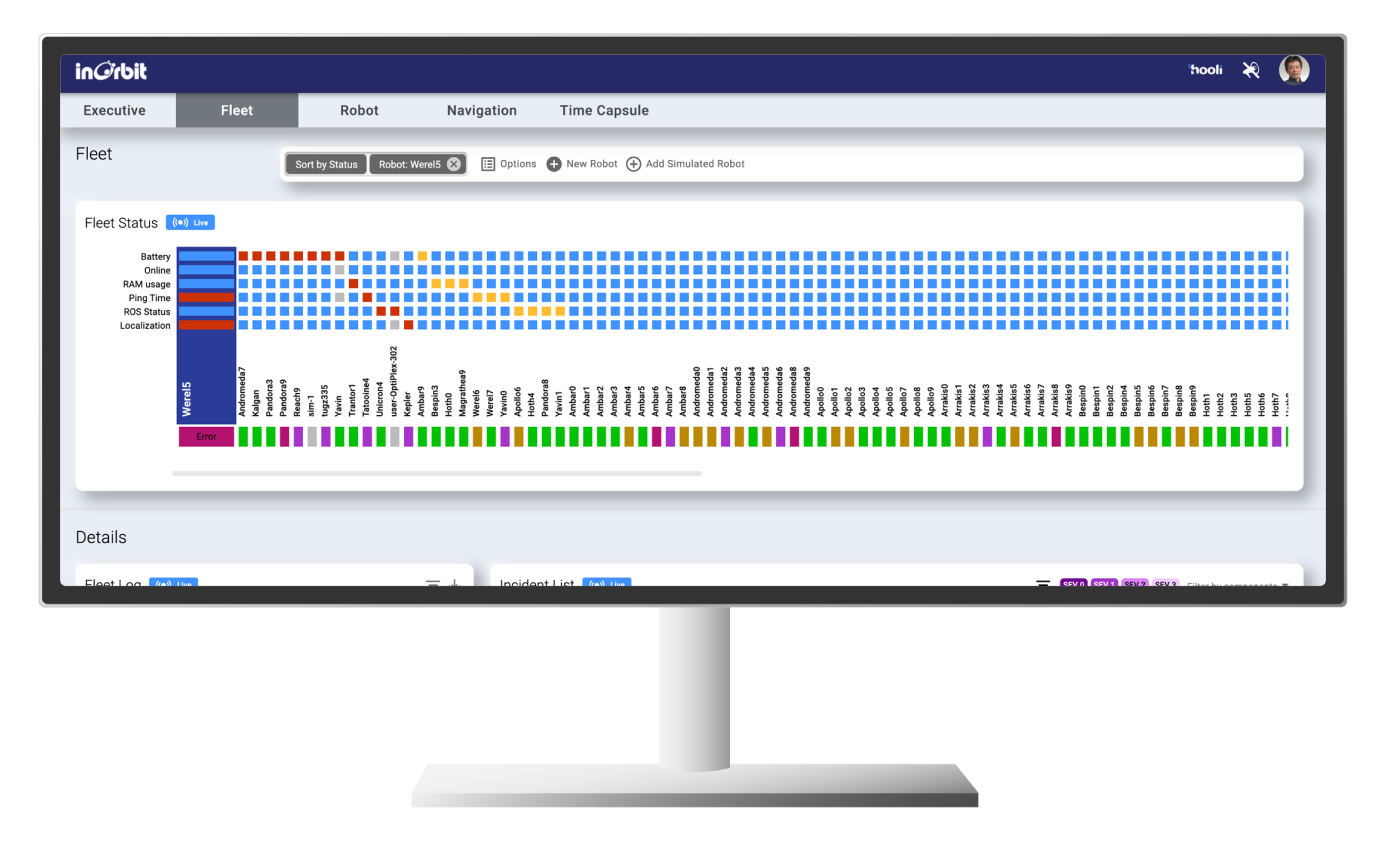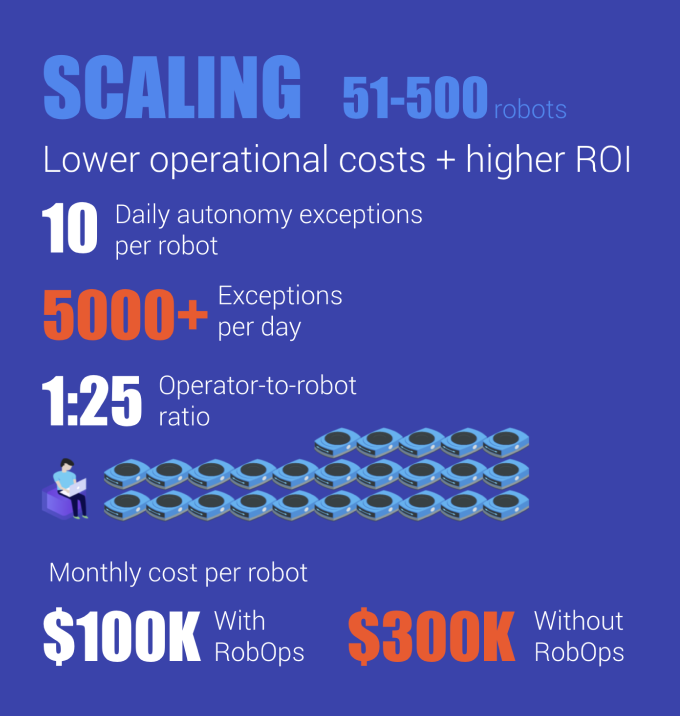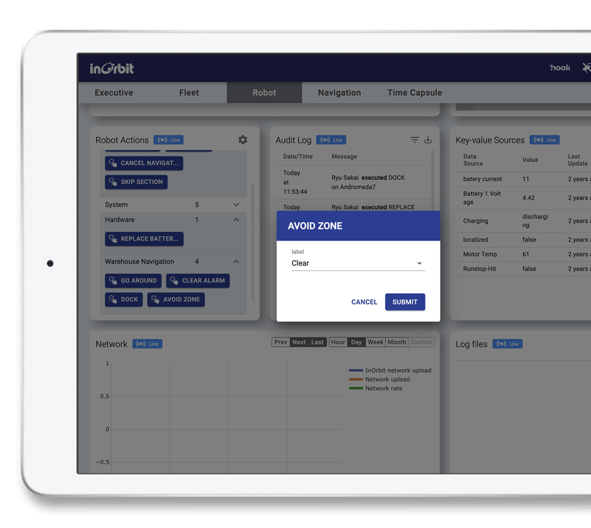.png?width=2793&height=800&name=persona-floor-engg%201%20(4).png)
.png)

Optimize issue discovery with single pane of glass monitoring to reveal incidents and relevant data and take control, even for thousands of heterogeneous robots on critical missions.

Reduce operations cost and training headaches with easily configurable actions and teleoperation suitable for the skills of a videogamer rather than a specialist.
As your team learns best practices to assess and resolve problems, activate guided one-click or fully automated actions that are based on the incident data to minimize time to resolution.

Effective robot operation demands both real-time intervention and the ability to retrospectively review certain situations to analyze incidents. InOrbit offers a simple, powerful interface to reveal and filter captured incidents (and trends) by any criteria. From there you can dive into the specifics of the situation, with the underlying dynamic data front and center for the duration of each incident. In-app notifications, as well as integrations with collaboration platforms, can help notify the right person on incidents.
Modern robots can operate autonomously in semi-structured or unstructured environments; however, there are practical limits to autonomy based on the unpredictable nature of these environments. InOrbit makes cloud-enabled remote interventions possible, whether automated based on configurable triggers or performed manually by an operator. These interventions make it possible to reduce downtime while minimizing operational cost. Through InOrbit’s Actions, companies can execute remote actions securely with a single click, giving operators without technical expertise the ability to effectively handle most situations.
Autonomous robots are often dispatched to complete specific tasks or missions. In the case of mobile robots, this may involve following paths or moving between predefined locations; cobot arms may be physically interacting or manipulating items around them. InOrbit helps plan these missions, track progress and status, and identify situations where the robot needs extra help to complete its mission.
Occasionally robots may require more direct remote interventions, whether to relocalize a lost robot, respond to false positives from the computer vision system, or move around physical obstacles. InOrbit offers several levels of teleoperation and controls to enable remote operators to achieve situational awareness and if necessary take over, usually just for a few seconds, to put the robot back on track and get it back to autonomous operation so it can make its way forward in its mission.
Observing a robotic fleet is not simple, and every company has its own metrics to indicate the overall health of the fleet. InOrbit’s interactive, real-time dashboard can support any level of observation/control. Featuring high-level key performance indicators, slice-and-dice fleet visualization, and drill-down to individual robots, InOrbit’s configurable widgets let you showcase or explore any metrics. Customers can use extensive yet intuitive settings or APIs to adapt the dashboard to their specific needs.



